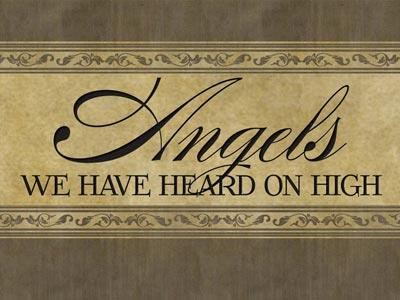-
Christmas Redefines Holiness
Contributed by Martin Ellgar on Nov 28, 2017 (message contributor)
Summary: A perspective on Matthew 2: 1-12. It is a review of Christmas with its powerful message of freedom and grace.
Matthew 2: 1-12
Christmas Redefines Holiness
The festive season is over. The Christmas tree is gone and its decorations have been put away for another year. Our waistline has stopped expanding. Stress levels are generally lower since relative and friends have been catered for, and our minds are more sober as we begin the New Year.
Then, today is a good day to review Christmas and its meaning. Many sermons begin the Christmas story with the birth of Jesus in the stable at Bethlehem. Then quickly move out to view the cross at Jerusalem as the most recognized place of salvation and the destiny of Jesus. Bethlehem is also a place of salvation and needs no other view than that of Jesus lying in the manager.
You know the story of Christmas and you know the story of salvation, but you may not know the full impact and meaning of just his birth at Bethlehem. To begin, I am going to make a profound statement about Christmas that from one perspective summarizes the whole event. And that is, Christmas redefines holiness. I’m going to say it again, because I want you to absorb it in every possible way even through osmosis, Christmas redefines holiness. In order to understand that statement we need to turn back a few pages and enter the Old Testament. It is in the Old Testament of the Bible that a comprehensive understanding of holiness can be achieved so that a clear comparison can be made.
In brief, the holiness of God meant that God was a unique being and separated from his creation. God was considered free from any blemish or immorality and for that reason there was a space between him and all that was considered common and profane. If any person who had come face to face with God or even inadvertently glimpsed God it would have meant death to them. Death came not as a punishment, but simply that the two different states could not exist together.
The problem of separateness needed to be resolved in order to allow God’s love and blessings to flow to his creation. Out of necessity a code of moral practice and ritual was established in order to safely approach God. A life free from immorality and blemish was considered a life pleasing to God. Should that fail at any time, and it did on a daily basis, then a regular ritual sacrifice on the altar became a way that could bring forgiveness and continued blessing from God. Through their ritual practice and sacrifice a person could get near God, but never in the presence of God.
We have a cultural mindset today that is very similar to the people of the Old Testament. We also use separateness as a means to express holiness or at least self importance. Today, a common person cannot simply go and meet a King or Queen, the President of the USA, the Pope, Gina Rinehart, a CEO of a large company, or even a celebrity. They are just too lofty and important to be bothered with the common people at street level. There are extensive cultural practices and rituals to be undertaken in order to meet them. There are tedious phone calls to be made, appointments to be won, preliminary interviews to undergo, forms and more forms to fill out, and for some a body search would be necessary. Even after all of that, you may only get as far as the waiting room with a brochure placed in your hand.
This mindset also shows itself in Christian churches. In part, it can be witnessed and experienced during a worship service. Spaces are created (the Sanctuary area etc) and things are made (altar, communion vessels, cross etc), and rituals are performed whereby all these point to and encourage the Old Testament idea of holiness. Of course, they have their rightful place and value. They help to remind us of our salvation through Jesus. They can also enhance our spiritual life through the physical interaction with them that is, kneeling for prayer, making the sign of the cross, taking communion, lighting a candle, and even some holy smoke helps. They can also be a trap where Old Testament thinking can creep in and make them more important than they ought to be.
Let us return our gaze back to baby Jesus in the manger at Bethlehem. There in the manger lay God himself. A miracle had happened. There God was in the presence of his creation. He himself was clothed with flesh like us that sustains blemish and sin. In his presence, besides Mary and Joseph, were the poor shepherds from the fields as were the wealthy foreigners from the east. Since the manger was in a stable, God was also in the presence of animals and dirt in general. God was in the presence of the common and the profane. There in God’s presence death was no more. In the manger at Bethlehem, separateness that defined holiness in the Old Testament was no more.

 Sermon Central
Sermon Central



